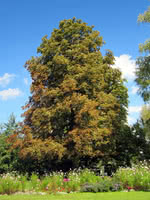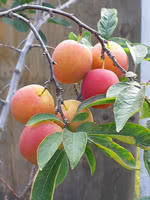Mon-Fri 9am - 5pm Mountain time
Horse Chestnut vs Patterson Pride Plum
Aesculus hippocastanum
Prunus nigra x salicina Patterson Pride
CUSTOM GROW
COMING SOON
(new stock expected: fall of 2025)
Horse Chestnut is a medium sized deciduous tree that is native to Greece but has been grown in North America for hundreds of years. It produces large nuts.
A top CO2 absorbing species. Experts think this tree may help climate change more than others.
The Patterson Pride Plum is known for its delicious flavor, with firm, sweet golden flesh and dark red skin that isn’t sour. The freestone plums can grow 4-5 cm in diameter and are well-suited for fresh eating, baking, and preserves. It can produce heavy yields that ripen in mid-September which is later than other plums.
C.F. Patterson developed the Patterson Pride Plum at the University of Saskatchewan. It is known for its semi-dwarf, weeping growth habit
Patterson Pride Plum is a hybrid between Canada Plum and Japanese Plum. For fruit production, it needs to be planted with another variety for cross-pollination. Canada Plum and American Plum are considered universal pollinizers.
Horse Chestnut Quick Facts
Patterson Pride Plum Quick Facts
Toxicity: most parts of plant are toxic

